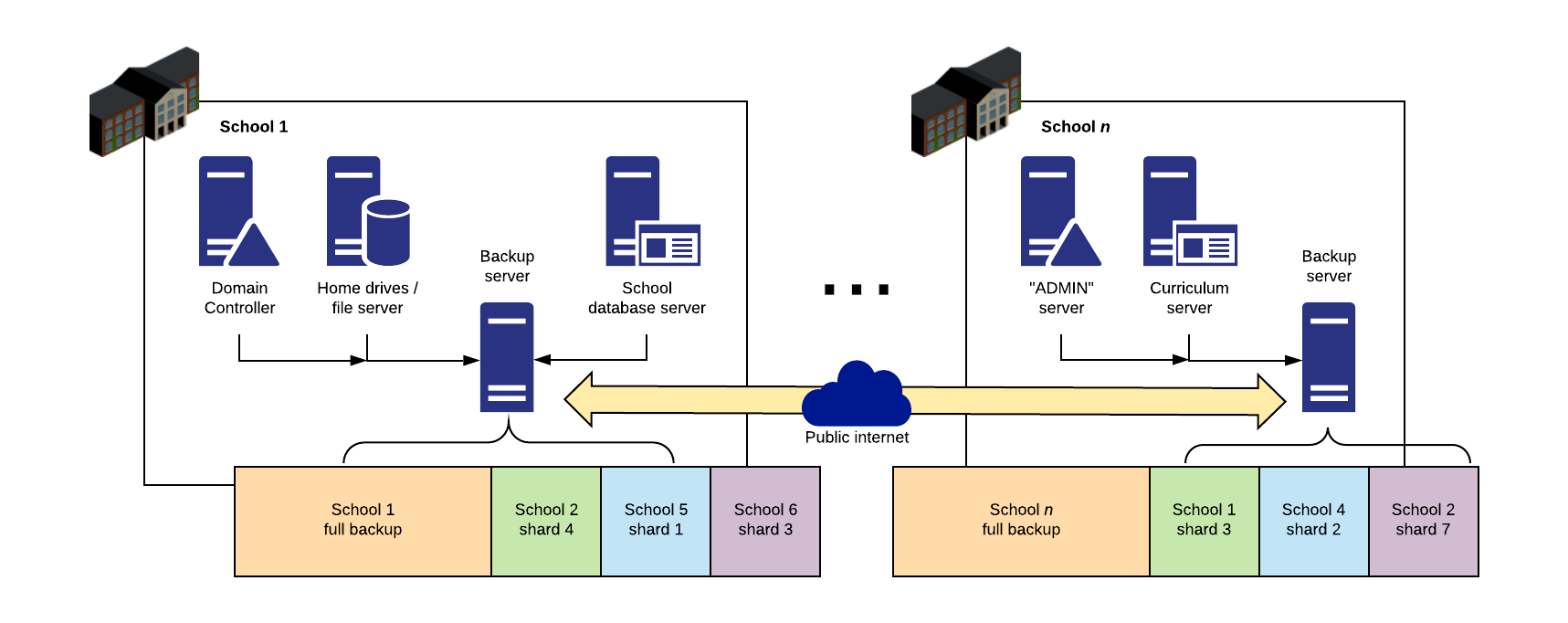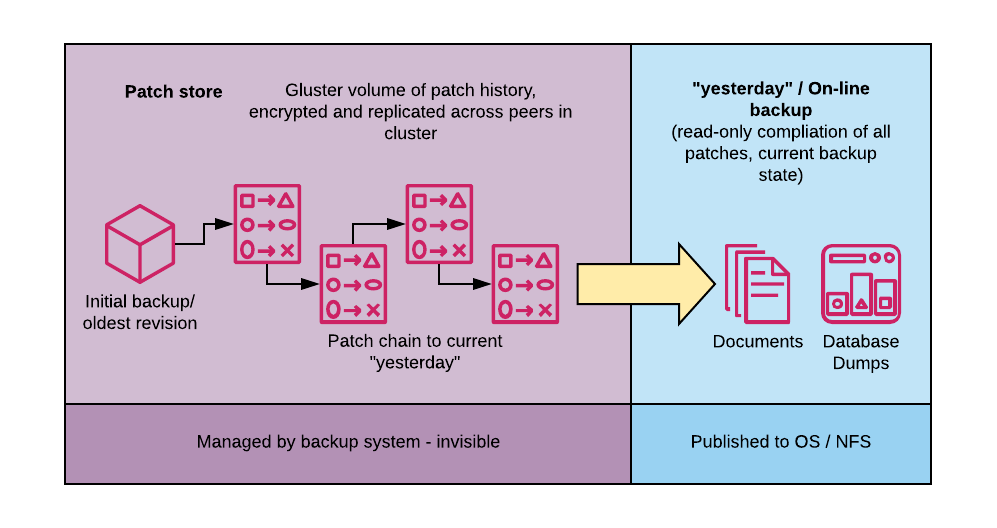CoStor was my dissertation honours project as part of my Computer Science degree course at the University of Edinburgh.
The concept behind the application was to allow a small number of organisations (in the initial usecase, a confederation of schools) to pool storage on commodity systems to build a fault-tolerant, geo-distributed backup solution by distributing backup data across appliances located inside different organisation datacenters. Backups were to be file-level and make use of delta syncs, and the system was designed to be resilient and able to operate over conventional, low-grade WAN links using HTTPS to simplify deployment. Each site was designed to be able to be recovered from shards replicated across the peer sites in the event of a catestrophic failure and all data was to be encrypted at rest.

The “core” database was based around (another) Django web application, which managed replication and version history, with platform and application specific “agents” pushing data to the core.

Initially, the plan was to use Gluster.fs as the storage backend, however on further investigation, it proved easier to implement this using the Django file object wrapper and manage the “index” of data in PostgreSQL.
Performance of this structure probably wasn’t entirely ideal, however it was a very good introduction into handling the quirks that you may find in a Linux filesystem and ensuring that all metadata was correctly captured. The tree structure which was used for deduplicating the file tree on a per-file and per-folder basis was also more challenging to implement in a sensible and robust way.